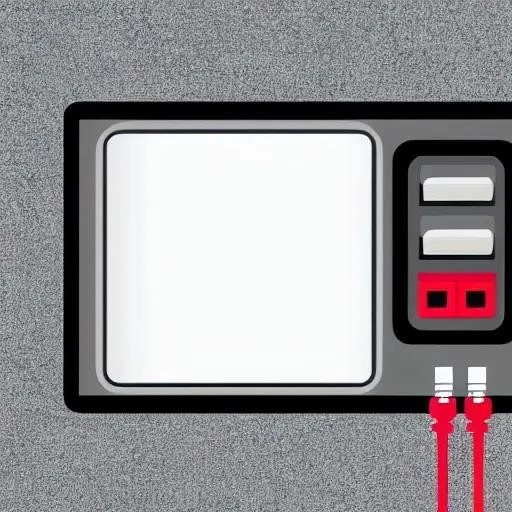
Few automotive predicaments evoke a sense of immediate helplessness quite like turning the key only to be met by a disheartening click or, worse, absolute silence. That dreaded moment when your vehicle refuses to ignite, leaving you stranded, can shatter even the most meticulously planned day. While the quick fix of a jump start often comes to mind, the true connoisseur of automotive self-reliance understands that merely resuscitating a dead battery is a temporary reprieve. A truly forward-thinking approach involves embracing the proactive power of proper car battery charging, transforming a potential crisis into a manageable aspect of vehicle maintenance.
In an era where our vehicles are becoming increasingly sophisticated mobile computers, powering everything from advanced infotainment systems to crucial safety features, the health of your car’s battery has never been more critically important. Neglecting its well-being can lead to a cascade of electrical issues, prematurely shortening its lifespan and impacting the myriad integrated systems reliant upon a stable power supply. Embracing effective charging strategies isn’t just about avoiding a breakdown; it’s about safeguarding your investment, ensuring peak performance, and cultivating an enduring sense of automotive independence. By integrating insights from modern battery technology, we can move beyond mere reactivity, charting a course toward unparalleled reliability and prolonged vehicle vitality.
Essential Car Battery Charging Tools & Safety Tips
To embark on your journey of proactive battery maintenance, equipping yourself with the right tools and understanding crucial safety protocols is paramount. This table outlines the fundamental components for safe and effective car battery charging.
| Category | Item/Description | Importance/Notes | Reference Link (Example) |
|---|---|---|---|
| Charging Equipment | Smart Battery Charger: Automatically adjusts voltage and amperage, prevents overcharging. | The most recommended type for modern batteries, offering various modes (maintenance, desulfation). | Battery Tender Official Site |
| Trickle Charger (Maintenance Charger): Delivers a low, constant current to maintain charge over long periods. | Ideal for vehicles stored for extended durations; often integrated into smart chargers. | CTEK Chargers | |
| Safety Gear | Safety Glasses/Goggles: Protect eyes from acid splashes or sparks. | Non-negotiable personal protective equipment. | |
| Chemical-Resistant Gloves: Guard hands against corrosive battery acid. | Essential when handling batteries or cleaning terminals. | ||
| Preparation & Environment | Well-Ventilated Area: Crucial to disperse hydrogen gas emitted during charging. | Prevents the accumulation of potentially explosive gases. | |
| Battery Terminal Cleaner/Brush: Removes corrosion for better conductivity. | Ensures a clean, efficient connection for charging. | ||
| Monitoring & Testing | Voltmeter / Multimeter: To check battery voltage before and after charging. | Provides objective data on battery state-of-charge. |
The Art of Revitalization: Understanding Your Charger and Battery
Modern battery chargers are remarkably intelligent devices, far removed from their rudimentary predecessors. Gone are the days of simple, unregulated current dumps that risked overcharging and damaging your battery. Today’s smart chargers, often described as multi-stage or automatic, meticulously monitor the battery’s state and adjust their output accordingly. They progress through distinct phases: a bulk charge delivering maximum current, an absorption phase tapering the current as voltage rises, and a float stage maintaining a low, constant voltage to prevent self-discharge. This sophisticated process, mimicking the charging cycle of your vehicle’s alternator, is incredibly effective at preserving battery health and extending its operational life, offering peace of mind to the discerning vehicle owner.
Connecting your charger, while straightforward, demands a careful adherence to safety protocols. Always ensure your vehicle’s ignition is off and all accessories are disconnected. Begin by attaching the positive (red) clamp of the charger to the positive (+) terminal of the battery. Subsequently, connect the negative (black) clamp to an unpainted metal surface on the engine block or chassis, away from the battery itself, to mitigate any risk of sparking near potentially flammable hydrogen gas. Once these connections are secure, and only then, plug your charger into the wall outlet. This methodical approach, consistently applied, dramatically minimizes hazards, transforming a potentially risky procedure into a routine task.
Beyond the Charge: Sustaining Battery Health and Avoiding Common Pitfalls
Regular charging, especially for vehicles that undertake frequent short trips or sit idle for extended periods, is a cornerstone of proactive maintenance. Short drives often don’t allow the alternator sufficient time to fully replenish the battery, leading to a gradual decline in its overall charge, a phenomenon known as stratification in lead-acid batteries. By periodically connecting a smart charger, you actively prevent this insidious degradation, ensuring your battery remains within its optimal operational voltage range. Experts at organizations like the Automotive Aftermarket Suppliers Association consistently emphasize that consistent, controlled charging is the single most impactful action a car owner can take to maximize battery longevity, often doubling its expected service life.
However, even with the most advanced chargers, certain pitfalls must be assiduously avoided. Overcharging, while less common with smart chargers, can still occur with older, unregulated models, leading to electrolyte boiling and irreversible damage. Conversely, allowing a battery to remain deeply discharged for prolonged periods invites sulfation, where lead sulfate crystals harden on the plates, drastically reducing capacity. Moreover, always verify polarity before connecting; reversing the positive and negative terminals can inflict severe damage on both the battery and your vehicle’s delicate electrical system. By remaining vigilant and informed, discerning drivers can navigate these complexities, preserving their vehicle’s intricate power architecture.
The Future of Automotive Power: A Bright Horizon
As automotive technology relentlessly marches forward, the landscape of battery care is evolving in exciting ways. We are witnessing the advent of advanced battery management systems (BMS) in electric vehicles, which continuously optimize charging and discharge cycles, offering unprecedented insights into battery health. Even for traditional internal combustion engine vehicles, innovations like regenerative braking and increasingly efficient alternators are pushing the boundaries of power management. The ongoing research into solid-state batteries and ultra-fast charging technologies promises a future where battery anxiety becomes a relic of the past, offering even greater convenience and sustainability. Embracing the current best practices for car battery charging not only empowers you today but also prepares you for the exhilarating innovations of tomorrow’s automotive world.
